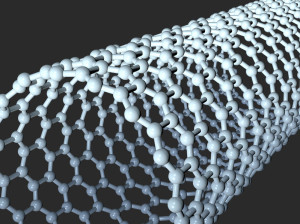Five exciting trends in civil engineering
It’s an exciting time to be in civil engineering. Advances in electronic technologies, material sciences and other fields have dramatically changed what we build with and how we practice civil engineering.
Here are five developing trends that could bring profound changes to civil engineering in less time than you might think.
Nanotechnology
It may be counter-intuitive, but engineering on the smallest scale has huge benefits for large projects. Nanotechnology is producing some exciting new techniques and promises.
A nanometer is one-billionth of a meter. To put that in perspective, a sheet of paper is 100,000 nanometers thick. So how can something so small be used in civil engineering?
Technologies like electron-beam lithography have developed carbon tubes with walls one nanometer thick. They have the highest strength-to-weight ratio of anything on earth, and can be stretched a million times longer than their thickness. When embedded in concrete, metal and glass, these tubes add tensile strength and density.
Sensors built at the nano-scale can be embedded into walls, struts and other structural elements to monitor stress and warn about impending cracks or fractures before they happen.
New materials
Advances in the technologies of building materials are promising a lot of new possibilities. One is literally out of Star Trek: transparent aluminum.
Truth be told, it’s not actually aluminum, but a ceramic, aluminum oxynitride. It’s made from aluminum powder, oxygen and nitrogen, heated to 2,000 degrees Celsius for extended periods and then cooled. Called ALON by Surmet Corporation, it’s the hardest polycrystalline transparent ceramic material on the market, four times harder than silica glass. The manufacturer promotes it as suitable for bulletproof and blast-resistant windows, and clear walls for buildings that need less structural support.
New concretes
Using larger grains of rock and sand than conventional concrete, this technique leaves 15 percent to 35 percent open space in the pavement. When used in place of asphalt, it allows rainwater to filter through to the soil underneath. This decreases runoff and reduces the amount of pollutants that wash into ground and surface water.
Concrete is also lighter in color than asphalt, reflecting more sunlight and staying cooler in the summer.
Cracks in concrete structures are a perennial problem, and a challenge to repair. Researchers have developed new types of concrete that can “heal” itself.
A researcher in the Netherlands has embedded bacteria into concrete. When a crack forms, the bacteria activates, multiplies and grows, sealing the crack.
Researchers in the United States have developed another method. Their self-healing concrete is embedded with capsules of sodium silicate. When a crack develops, the capsules burst and release a gel that fills the open space and hardens.
Whichever method is used, self-healing concrete can extend the lifespan of civil engineering projects and reduce maintenance costs for owners.
Embedded power
Many jurisdictions in the United States are encouraging builders to install solar power generation on new buildings. As an alternative to placing photovoltaic (PV) solar panels on a roof, researchers have developed a PV glazing that can be built into walls and roofs. In effect, the whole exterior of the building can generate and store energy. This technology is now being tested to achieve net-zero energy buildings.
3D printing
You may think of 3D printing as a technology for making toys and small parts in manufacturing. But today, 3D printing is an exciting part of civil engineering. The technology can build models of buildings and structures from modeling software.
3D printing also has applications in the field. An architecture firm in the Netherlands is using a huge 3D printer to produce polymer components that can be assembled into the rooms of a house. While still in the development stage, this approach holds a lot of promise for prefabricated elements of building projects.
Exciting times in civil engineering
Talk to our civil engineering team about how the emerging civil engineering trends can benefit your next project.

